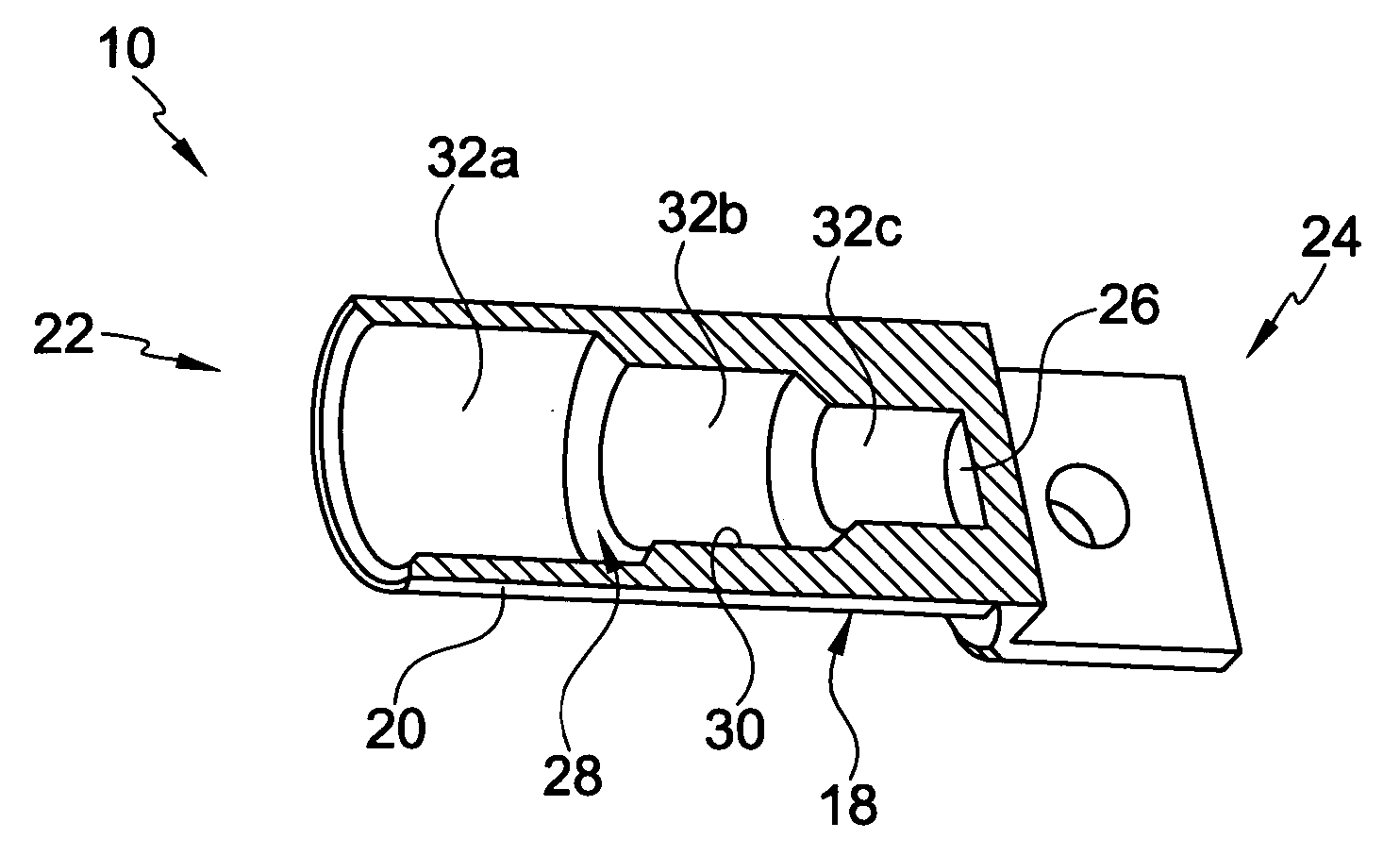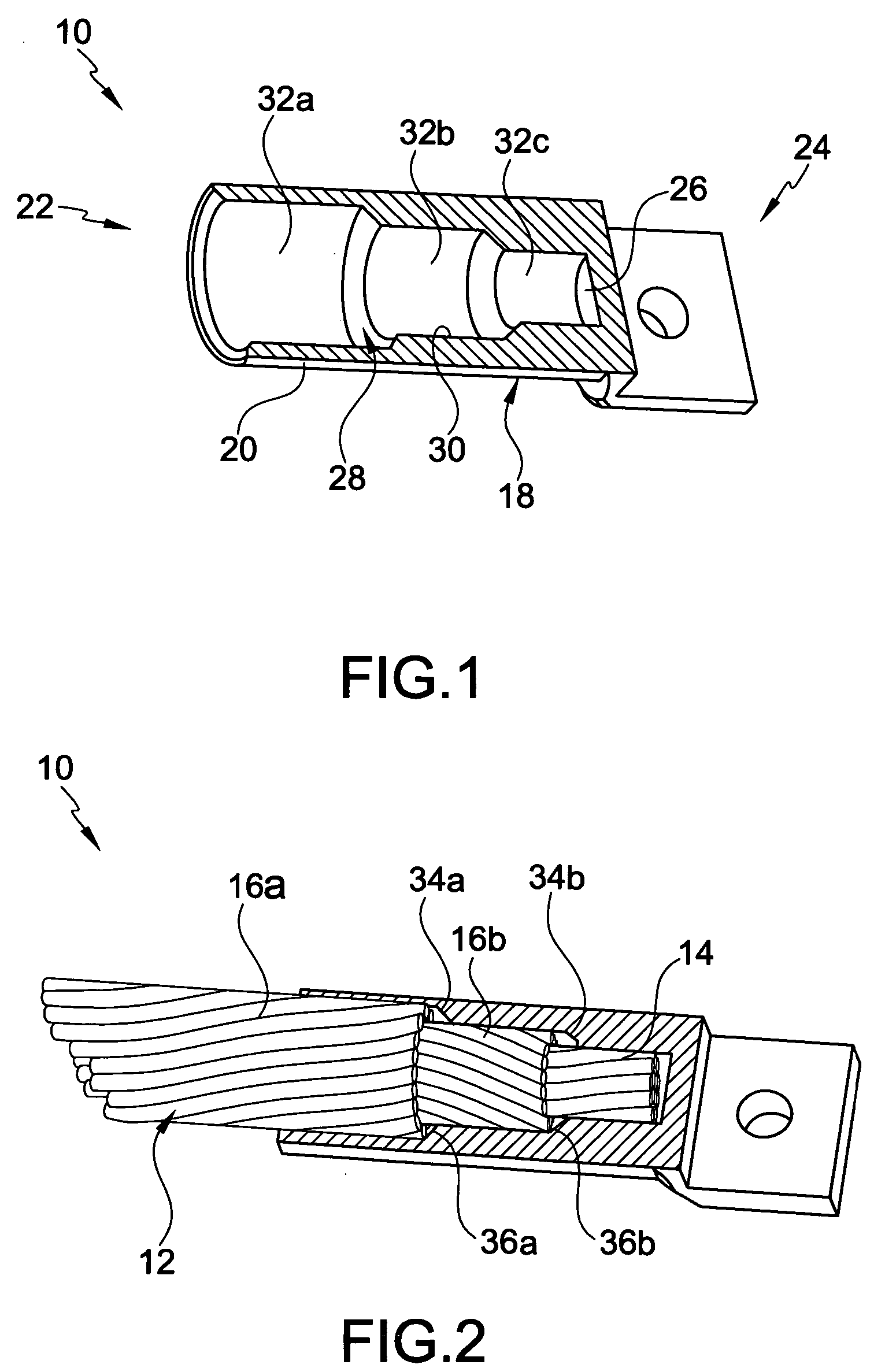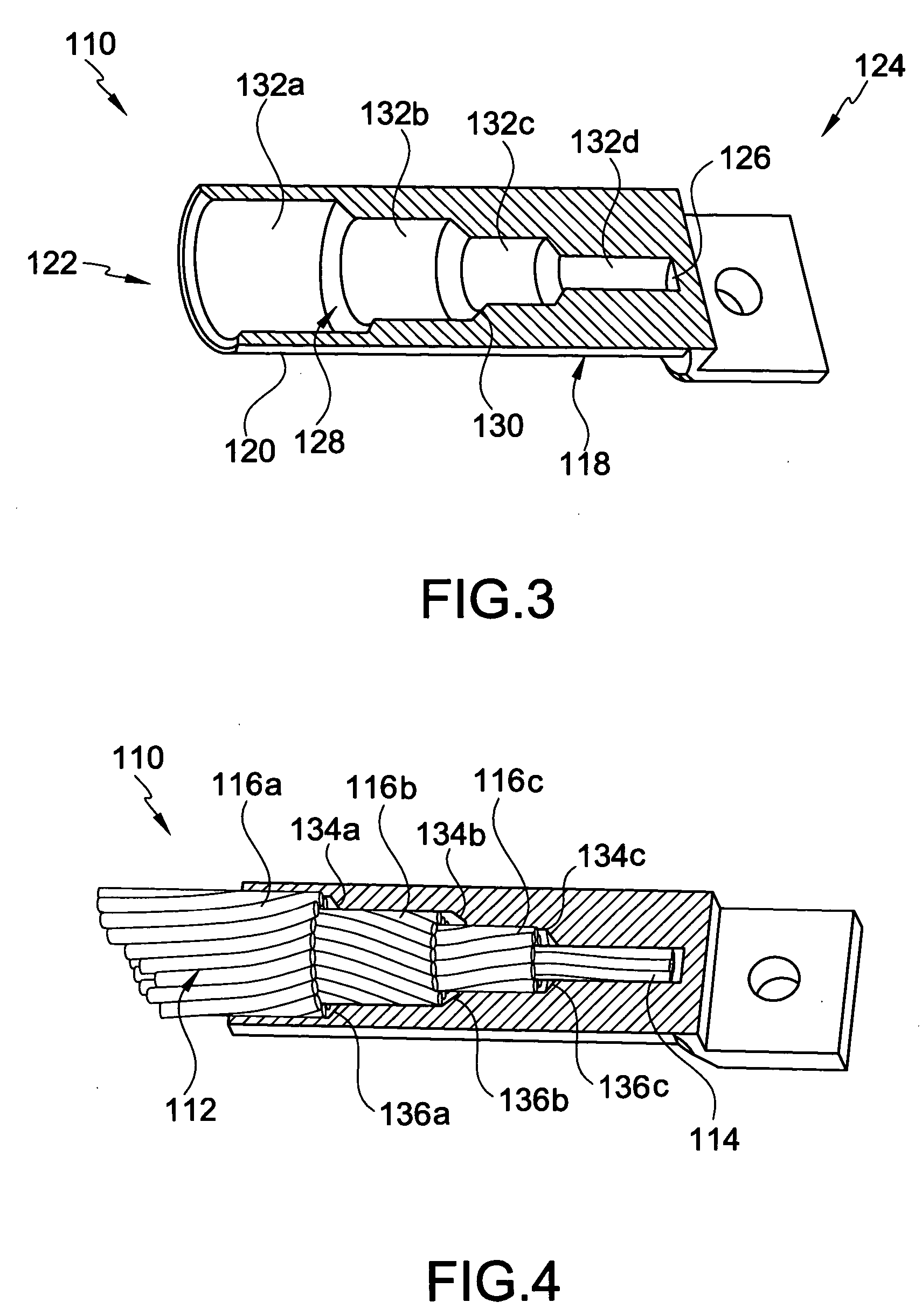Stepped compression connector
a technology of compression connectors and connectors, applied in the direction of multiple conductor connectors, connection contact member materials, cable junctions, etc., can solve the problems of compression connectors, weak links in the system, and failures at an increasing rate, and the majority of failures occur in aluminum compression connectors and conductors
- Summary
- Abstract
- Description
- Claims
- Application Information
AI Technical Summary
Benefits of technology
Problems solved by technology
Method used
Image
Examples
second embodiment
[0042] A stepped compression connector 110 according to the invention is illustrated in FIGS. 3-4. Stepped compression connector 110 includes a substantially cylindrical body 118 having an exterior surface 120, a cable receiving open end 122, and a terminal connection end 124. Terminal connection end 24 includes an end wall 126. A generally tubular bore 128 extends into body 118 from cable receiving open end 122 and includes an inner surface 130.
[0043] Surface contours 132a-d are disposed on inner surface 130 for receiving multi-layered conductor cable 12. Surface contour 132d may be surfaced with carbide grit or some other surface treatment to enhance the gripping strength of the connector 110. Tubular bore 128 is constructed of an axial length and diameter approximately equivalent to that of a corresponding layer of conductor cable 12. Bore 128 has a first diametrical portion at contour 132d approximately equal to the core layer 14 to which contact is made and a second diametrical...
third embodiment
[0044] A wire splicing connector 210 according to the invention is illustrated in FIG. 6. Similar to the stepped compression connector 10, wire splicing connector 210 includes a body 218 having an exterior surface 220 and cable receiving open ends 222. A generally tubular bore 228 extends into body 218 from cable receiving open ends 222 and includes an inner surface 230.
[0045] Wire splicing connector 210 includes a cable splicing passageways 232 for receiving ends of two mutli-layered conductor cables (not shown). The cable splicing passageways 232 are positioned intermediate proximate end portion 234 and distal end portion 236 of body 218. The proximate portion is defined by approximately half the axial length of body 218 and distal end portion is defined by approximately the other half the axial length of body 218. Body 218 is separated into two portions 234, 236, with the midpoint 233 dividing cable splicing passageways 232.
[0046] Surface contours 232 are disposed on inner surfa...
PUM
 Login to View More
Login to View More Abstract
Description
Claims
Application Information
 Login to View More
Login to View More - R&D
- Intellectual Property
- Life Sciences
- Materials
- Tech Scout
- Unparalleled Data Quality
- Higher Quality Content
- 60% Fewer Hallucinations
Browse by: Latest US Patents, China's latest patents, Technical Efficacy Thesaurus, Application Domain, Technology Topic, Popular Technical Reports.
© 2025 PatSnap. All rights reserved.Legal|Privacy policy|Modern Slavery Act Transparency Statement|Sitemap|About US| Contact US: help@patsnap.com



